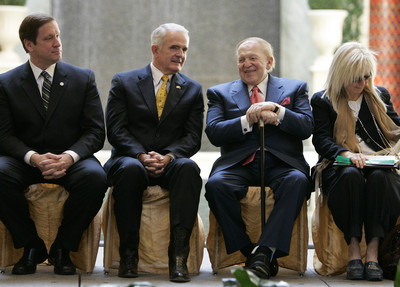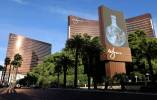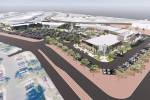That’s what they mean by green
The Palazzo has been designated as the largest Leadership in Energy and Environmental Design (LEED) certified building in the world by the U.S. Green Building Council.
The $1.9 billion hotel-casino, which opened in January, was recognized with a silver LEED certificate for energy-efficient design and construction along with its renewable energy technologies, services and policies.
U.S. Green Building Council President and Chief Executive Officer Rick Fedrizzi said the 50-story Palazzo, which has 3,066 hotel rooms, is four times the size of the Pittsburgh Convention Center, which had been the world's largest LEED certified building before Wednesday's dedication.
"It's a fairly extensive process that doesn't happen quickly," Fedrizzi said Wednesday. "I was one of the founders of the U.S. Green Building Council 15 years ago, and I never could imagine that the ideas would ever touch the Las Vegas Strip."
Fedrizzi said a building the size of the Palazzo could see 30 percent to 40 percent energy savings and more than 50 percent in water savings based on the designs and conservation methods incorporated into the project.
Las Vegas Sands Executive Vice President Brad Stone said the company's development team worked closely with LEED consultants during the resort's two-year building process.
"The total annual environmental savings generated as a result of our commitment to green technology and construction is staggering and we are convinced that this will have a positive impact for years to come," Stone said.
Nevada is one of only two states to mandate that all public buildings be built or renovated to the LEED standard. Legislation passed in 2005 provided property tax savings to those buildings meeting the green building standards.
Stone said green building costs added to the overall Palazzo budget, but the percentage was still being calculated. Some of the costs involved recycling building materials. Other construction expenses went toward recovering water leakage in the construction of the Palazzo's five-level underground parking garage. The water is used in irrigation.
"It's not cheap, but there are three winners because of the impact this type of building makes," Stone said. "Our stockholders, Clark County and, of course, the environment."
During the Palazzo's construction, Fedrizzi said Las Vegas Sands recycled 42,000 tons of building materials. In addition, the Palazzo's construction included structural steel that averaged 95 percent recycled content, while the concrete averaged a 26 percent recycled content rate.
Some of the green building highlights at the Palazzo include artificial turf, drip irrigation and moisture sensors in planted areas that result in a more than 75 percent reduction in irrigation needs. In a statement, Las Vegas Sands said its water conservation efforts help the property conserve enough water to provide each Nevada citizen with 266 eight-ounce glasses of water for a year. Energy conservation will result in enough savings to light a 100-watt light bulb for 12,100 years.
The Palazzo swimming pools are heated with a solar pool heating system. In the summer, the excess solar energy not needed for the pools is directed to the hotel's hot water system. Air-conditioning controls in guest suites are automatically set back by several degrees when guests are out and reset to the desired temperature upon return.
"From the beginning, we were determined to create Las Vegas' first truly ecofriendly property and we are extremely proud to have achieved it and be recognized for it," Las Vegas Sands Chairman Sheldon Adelson said in a statement.
Contact reporter Howard Stutz at hstutz@reviewjournal.com or 702-477-3871.




























